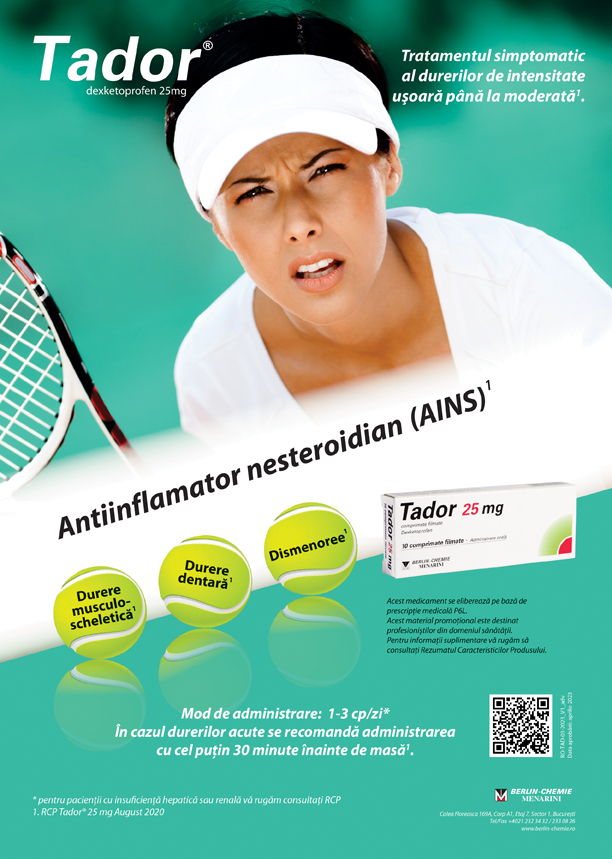Authors: Bianca Jurjiu1, Marc Damian2, Cezar Login3, Simona Grad4, Adina Chiș5,6, Maria-Magdalena Tămaș7, Laura Muntean7, Ileana Filipescu7, Siao-Pin Simon7, Romana Vulturar5,6
Affiliation
1 Department of Rheumatology, Emergency Clinical County Hospital Cluj, Discipline of Rheumatology, “Iuliu Hațieganu” University of Medicine and Pharmacy Cluj-Napoca, Romania
2 Student 5th year, Faculty of Medicine, “Iuliu Hațieganu” University of Medicine and Pharmacy Cluj- Napoca, Romania
3 Department of Physiology, “Iuliu Hatieganu” University of Medicine and Pharmacy Cluj-Napoca, Romania
4 2nd Department of Internal Medicine, Emergency Clinical County Hospital Cluj, “Iuliu Hațieganu” University of Medicine and Pharmacy Cluj-Napoca, Romania
5 Department of Molecular Sciences, “Iuliu Hațieganu” University of Medicine and Pharmacy Cluj-Napoca, Romania
6 Cognitive Neuroscience Laboratory, Babeș-Bolyai University Cluj-Napoca, Romania
7 Department of Rheumatology, Emergency Clinical County Hospital Cluj, Centre for Rare Autoimmune and Autoinflammatory Diseases (ERN-ReCONNET); Discipline of Rheumatology, “Iuliu Hațieganu” University of Medicine and Pharmacy Cluj-Napoca, Romania
Abstract
Creatine kinase (CK) level depends on muscle mass, age, race, physical activity and various pathologies involving the muscles or the heart. Resistance training elicits the greatest release of CK, and is the best way to attain muscle hypertrophy. The highest post-exercise serum enzyme level is found after prolonged exercise such as ultradistance marathon running or weight-bearing exercises and downhill running, which produce eccentric muscular contractions. Persistently elevated CK levels in apparently healthy subjects may indicate a late-onset underlying condition. The decrease in the serum enzyme level depends on the period of rest after exercise, as short-term physical inactivity may reduce the lymphatic transport of CK and the release of the enzyme from the muscle fibres. We discuss the source and level of CK in various situations, the different CK isoenzymes and also when to test for an underlying myopathy or other pathologies which may impact the long-term athletic performance. It is likely safe for athletes with suspected myopathy to continue physical activity at a lower intensity to prevent muscle damage, and allow appropriate rest to favour recovery. Thyroid dysfunctions and drug-induced myopathies should be ruled out. History and clinical examination could help clarify whether other muscle-directed investigations are required.
Key words: creatine kinase, athlete, physical training, rhabdomyolysis, myopathy, statins











